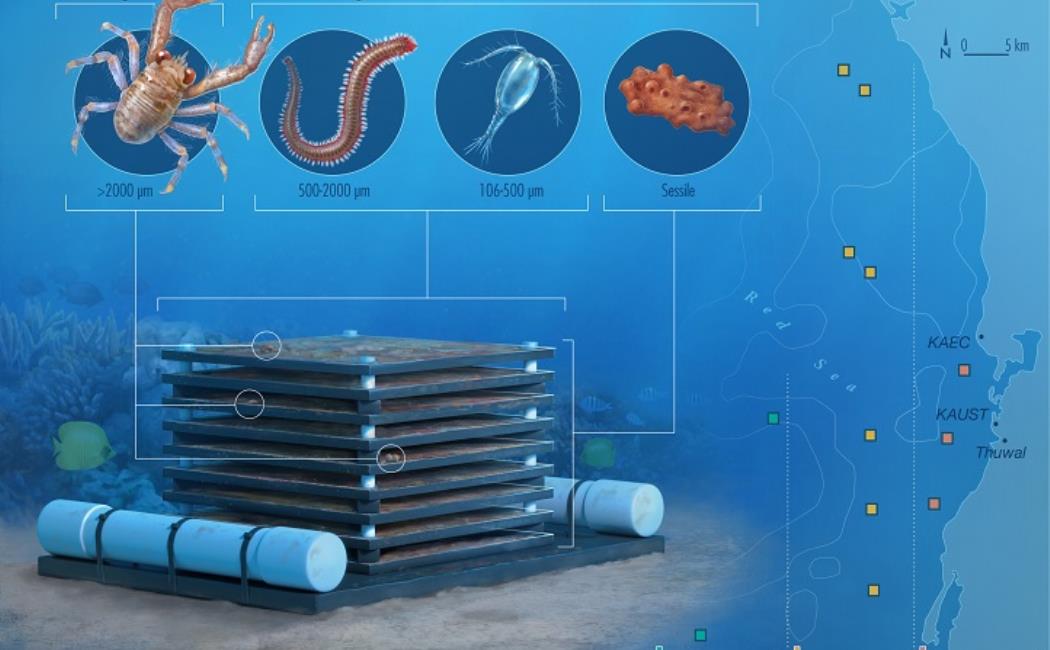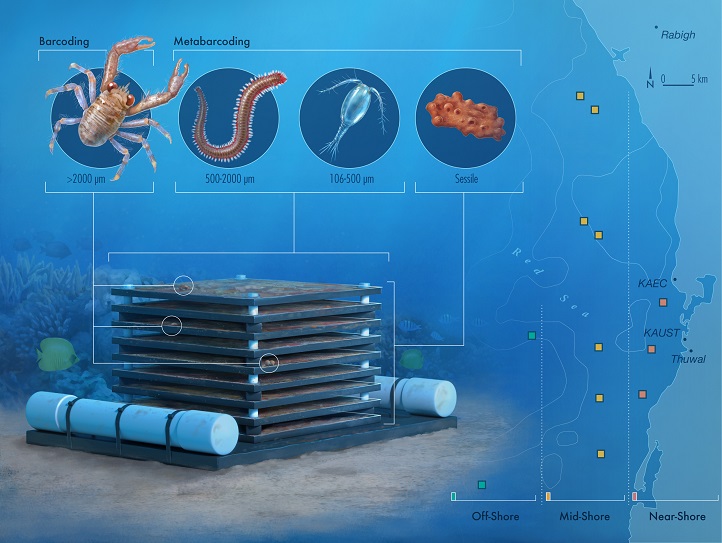


01 October, 2018

Cryptic fauna—small organisms that inhabit the hidden spaces within a reef structure—represent a substantial proportion of the diversity within coral reefs but are typically neglected in traditional visual surveys, which tend to focus on large and conspicuous species, such as fish and corals.
An international collaboration comprised of marine scientists from KAUST, the United States and Taiwan investigated the diversity patterns of the cryptic fauna in eight reefs in the central region of the Red Sea. The distribution patterns of these small creatures were unraveled using autonomous reef monitoring structures (ARMS), which consist of stacks of plates creating an artificial three-dimensional habitat for colonization, in conjunction with amplicon sequencing methodologies.

Autonomous reef monitoring structures (ARMS) consist of stacks of plates creating an artificial three-dimensional habitat for colonization
© 2018 KAUST; Xavier Pita
“Cryptic fauna has previously been revealed to show different responses to those organisms normally assessed in reef monitoring,” says lead author, John Pearman, from KAUST. “Therefore to effectively manage the biodiversity of coral reefs it is important to understand how cryptic fauna vary across spatial scales and how these organisms may respond to environmental changes.”
Depending on the distance from the coast, organisms experience changes in conditions, such as salinity, temperature, nutrients, and sedimentation: all of which can have impacts on the distribution of those organisms and therefore in the composition of the
ecological communities.
“Our study shows that different reef habitats across the shelf are inhabited by different sets of species and are therefore relevant to the regional diversity. These results have clear implications for the design of marine protected areas,” explains Pearman.